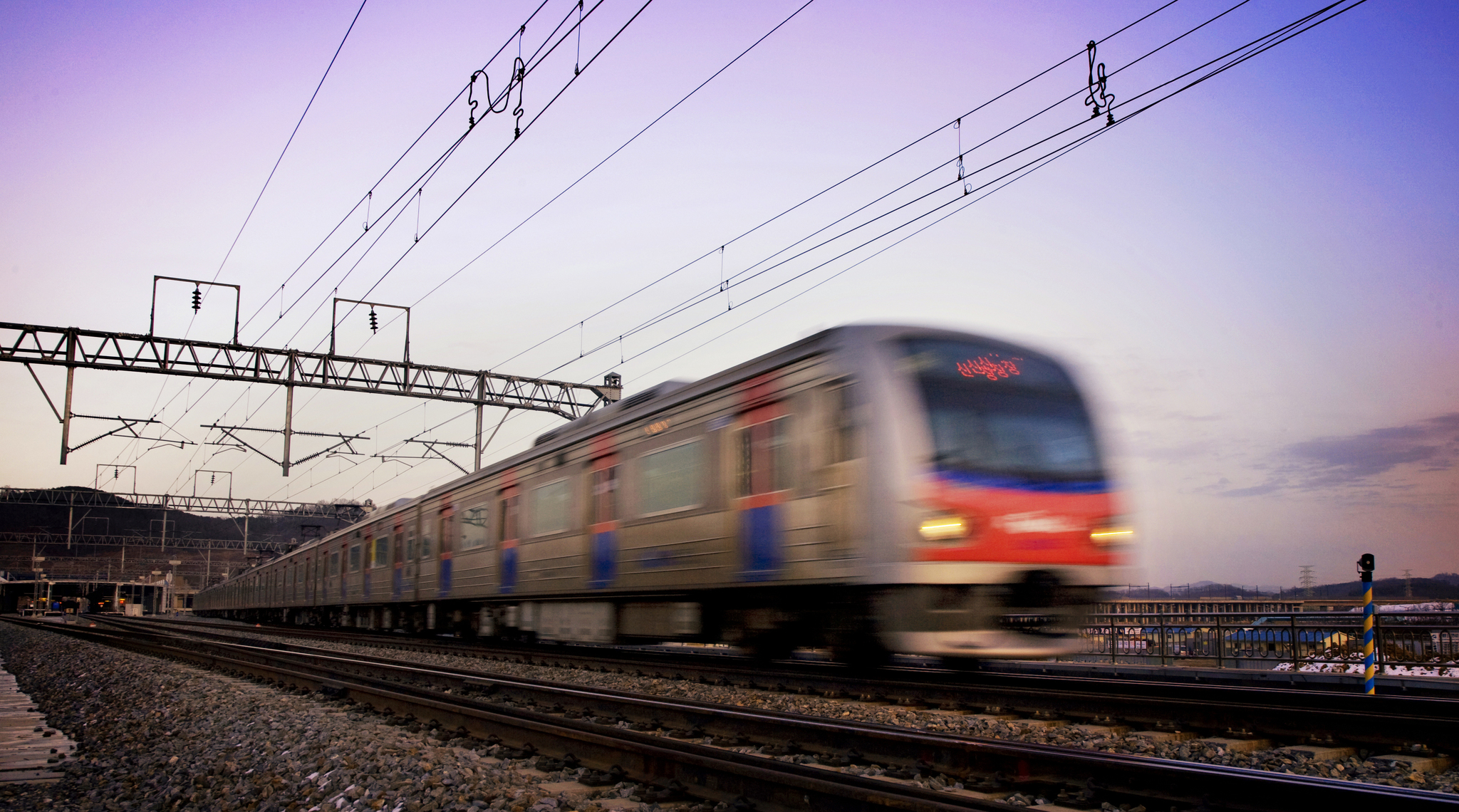![The Ministry of Land, Infrastructure and Transport reported to the Blue House that it would significantly increase regional railways. [중앙일보]](https://i0.wp.com/pds.joins.com/news/component/htmlphoto_mmdata/202102/17/dcef398e-d483-4026-a62a-48c7d79e86d2.jpg?w=560&ssl=1)
The Ministry of Land, Infrastructure and Transport reported to the Blue House that it would significantly increase regional railways. [중앙일보]
‘Activation of local metropolitan railways.’
Among the Ministry of Land, Infrastructure and Transport’s ‘2021 main business promotion plan’ reported to the Blue House on the 16th, in the field of transportation, the plan to expand metropolitan railways outside the metropolitan area was empowered. The Ministry of Land, Infrastructure and Transport reported, “We will increase the metropolitan transportation infrastructure, especially metropolitan railways, to expand the power of regional bases.”
[뉴스분석]
Ministry of Land, Infrastructure and Transport “Expansion of regional railways”
Dimension to increase the competitiveness of the regional economy
Impediment to low business performance compared to investment cost
“Priority selection criteria and supplementary measures required”
To this end, by the second half of this year, it was decided to come up with an improvement plan to revitalize the regional metropolitan railways, where the project conditions are poor. In addition, it plans to improve the designation standards in consideration of the living area and the scope of operation, prepare a plan for rationalization of operation, and discover wide-area railroad projects by region and reflect them in the 4th national rail network construction plan currently being established.
Heon-Jung Kim, head of the Ministry of Land, Infrastructure and Transport, explained, “We are considering a plan to expand metropolitan railways in order to increase the competitiveness of metropolitan economies other than the metropolitan area.” Wide-area railroad means an urban railroad or railroad that runs across two or more cities and provinces in accordance with the law.
According to the Ministry of Land, Infrastructure and Transport, Daegu is the first metropolitan railway project that is currently being promoted outside the metropolitan area. A total of 151.5 billion won is invested to convert the 61.8km section between Gumi-Daegu-Gyeongsan into electric trains so that electric vehicles can be operated, with the goal of opening by the end of 2023.
![Daegu metropolitan railway project route map. [자료 국토교통부]](https://i0.wp.com/pds.joins.com/news/component/htmlphoto_mmdata/202102/17/e52fec5f-65ba-4464-af89-2d9565bd212d.jpg?w=560&ssl=1)
Daegu metropolitan railway project route map. [자료 국토교통부]
It is known that the Gyeryong~Sintanjin (35.4km) metropolitan railway project in the Chungcheong area will also be ordered for construction in the second half of this year. The opening is the target for 2024. In addition, the second phase project of the double track train connecting Busan (Ilgwang Station) and Ulsan (Taehwagang Station) is also scheduled to open in October. Although this project was not designated as a metropolitan railway, it will actually take on the role of a metropolitan railway.
The Ministry of Land, Infrastructure and Transport is planning to discover more metropolitan railway projects in addition to these. Some argue that the metropolitan railway connection project should be promoted not only in metropolitan areas, but also in innovative cities and corporate cities.
The problem is business. Many experts agree with the purpose of expanding the metropolitan railway, but are skeptical about the viability. This means that there are not many regions where there will be enough demand to cover the investment and operating expenses.
Kang Gyu-won, an emeritus professor at Hanyang University, said, “Most of the local metropolitan railroads are expensive, but the most reliable indicator of the expected benefits, such as the decreasing population, the conditions are quite poor to promote the project.” It won’t be easy,” he said.
Professor Son Ki-min of Chung-Ang University also pointed out, “Considering the degree of development and linkage in the surrounding area, it would be difficult to build a metropolitan railway in all metropolitan areas.” Professor Jeong Jin-hyuk of Yonsei University was also concerned that “the railroad business can put a huge financial burden on local governments.”
![It is pointed out that the business feasibility of metropolitan railways outside the metropolitan area is insufficient due to insufficient demand. [연합뉴스]](https://i0.wp.com/pds.joins.com/news/component/htmlphoto_mmdata/202102/17/c2268a75-b7a4-4f43-9c5f-3c2bbf3e48c1.jpg?w=560&ssl=1)
It is pointed out that the business feasibility of metropolitan railways outside the metropolitan area is insufficient due to insufficient demand. [연합뉴스]
In fact, the local government is responsible for 30% of the project cost of the metropolitan railway. Seoul pays an exception of 50%. In addition, if the metropolitan railroad operation is taken over by a local government’s urban railroad operating institution, rather than KORAIL, most of the future operational losses will have to be borne. Of course, the government’s fiscal burden, which pays 70% of the project cost, is of course not easy.
For this reason, it is pointed out that it is necessary to clarify the criteria for selecting project targets and to prepare supplementary measures to fill in the insufficient business value. Hanyang University professor Ko Jun-ho said, “It would be better to start with routes and regions that have a high priority in terms of cost and demand, rather than promoting the project collectively.”
Incheon National University professor Kim Eung-cheol also pointed out, “It is an area where wide-area railroads are judged to be indispensable, but if business feasibility is poor, various supplementary measures should be sought, such as increasing demand through development around railroad lines.”
Some opinions suggest that unreasonable complaints or pressures from the region should be excluded during the metropolitan railway project. Professor Yoo Jeong-hoon of Ajou University said, “Even if you look at the metropolitan area, you are being swung over by local civil complaints, and you are creating a curved line that is unconvincing.”
Reporter Kang Gap-saeng [email protected]
